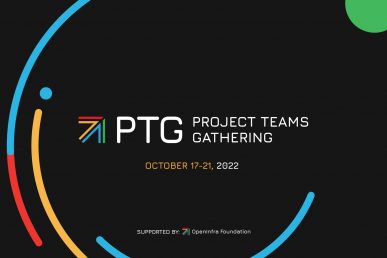Billing is subject that brings many cloud users back down to earth and is often top-of-mind for many OpenStack users. This is the second post kicked off by a thread started on the developer’s mailing list about current options and best practices.
Here Superuser talks to Christophe Sauthier, the project team lead (PTL) of CloudKitty, OSF’s rating-as-a-service project. CloudKitty is currently being developed by Sauthier’s company Objectif Libre and Catalyst IT and the hope is to get more developers on board.
You’ll find Sauthier at the Vancouver Summit, along with colleague Luka Peschke, for a CloudKitty onboarding session at the Forum. The pair are also leading a workshop titled “Chargeback and showback of your cloud services using CloudKitty and Gnocchi.”
You can check out all the sessions around billing at the Summit here.
What are your recommendations for older cloud users with home-grown solutions?
The first thing to do is to figure out if they’re happy with their solution in terms of mind coverage, maintenance cost, openness to the rest of their infrastructure and integration on OpenStack ecosystem, including the dashboard Horizon.
If they’re happy with it, then they should stick with what they’ve got. If not, one of the best ways to evaluate CloudKitty is to discuss it with us (over IRC, email, in real-life….) so that we can talk about coverage of their use cases…
Is CloudKitty suitable for use in large-scale production?
That depends on how large-scale you have in mind and the version of CloudKitty you want to use. Old releases were mainly just shipping some database back ends that clearly face some scalability issues.
We’ve already started to tackle that by:
On the mailing list thread it was mentioned – maybe by you? – that CloudKitty’s biggest problem is that people don’t know about it – any thoughts on why and how to solve it?
Yes that was me! We know that we’re lacking some use cases, so sometimes we do what we think is the right thing but having some input would be so much better…We’re also trying to attend a lot of OpenStack-related events and improve our visibility that way…
What new features/enhancements/fixes are expected for the upcoming release?
We have a tons of new features coming in Rocky! The main features are:
- Allowing CloudKitty to work as a standalone solution and thus to obtain non-OpenStack metrics. This work has already been integrated on the upstream branch! It’s clearly a step in the direction that encourages the Foundation with the Open Infrastructure Integration
- Storage V2 which will be focused on scalablity and metric-oriented. It will be an evolution of the current hybrid storage, based on Gnocchi and SQL backends. It will be more efficient (speed, size,..). And finally it will ease the external contribution/evolutions.
- API v2 which will also work on the scalability of CloudKitty (including some pagination by design). This new API paves to way for some externals collectors to use CloudKitty as a rating service — people will be able to write their own collectors to put whatever metrics they have in CloudKitty.
What contributions do you need most from the community?
ANY contribution is welcome (technical or not)!
We’re always looking for feedback and use cases from new people/companies…
Over the last cycle, we realized that having some help on the OpenStack community-wide goals would be great (since they are quite time consuming) and could be an interesting way to join the project. Oh and we would be really happy to discuss that at the onboarding session at the Summit.
Anything else you’d like people to know?
That we have a cute logo, so we definitely deserve a look!

- OpenStack Homebrew Club: Meet the sausage cloud - July 31, 2019
- Building a virtuous circle with open infrastructure: Inclusive, global, adaptable - July 30, 2019
- Using Istio’s Mixer for network request caching: What’s next - July 22, 2019

)










